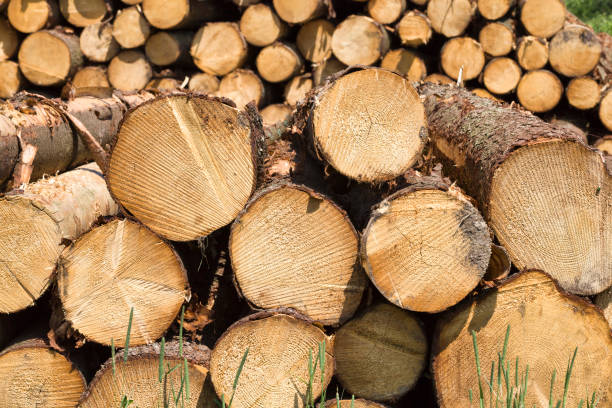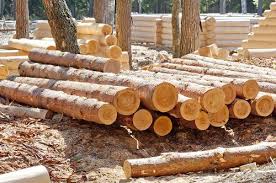We possess the necessary qualifications to assess both softwood and hardwood lumber for grading purposes. When needed, we can prepare labels that accurately represent the content of each lumber package.
Hardwood lumber grading
Hardwood lumber grading is a systematic process used to evaluate and classify wood based on specific criteria. Qualified hardwood lumber graders play a crucial role in this process, ensuring that wood products meet industry standards and customer expectations. Graders typically undergo specialized training and certification to develop the skills needed for accurate and consistent evaluation. Key qualifications for hardwood lumber graders include:


- Knowledge of Wood Species: Graders must be well-versed in the characteristics of various hardwood species, understanding their natural variations in color, grain pattern, and density. This knowledge is essential for accurate grading.
- Understanding Grading Rules: Graders need a comprehensive understanding of industry-accepted grading rules, such as those established by organizations like the National Hardwood Lumber Association (NHLA) in the United States. These rules outline the criteria for determining the grade of lumber based on factors like size, appearance, and defects.
- Visual Inspection Skills: Graders must have a keen eye for detail and the ability to visually inspect lumber for defects, including knots, splits, stains, and warp. This skill is crucial for assigning the appropriate grade to each piece of wood.
- Consistency and Accuracy: Consistency in grading is vital to ensure uniformity across batches of lumber. Graders should demonstrate the ability to apply grading rules consistently, providing accurate assessments of the wood’s quality.
- Communication Skills: Effective communication is essential for conveying grading decisions to stakeholders in the lumber supply chain. Graders should be able to articulate the reasons behind their grading decisions clearly.
- Adherence to Standards: Graders must adhere to industry standards and ethical practices. This includes staying updated on changes in grading rules and participating in ongoing professional development to maintain and enhance their skills.

Qualifications for hardwood lumber grading help ensure the reliability and integrity of the grading process, ultimately contributing to the quality and consistency of hardwood products in the market.
SOFTWOOD lumber grading
Softwood lumber grading requires specialized knowledge and skills to accurately assess and classify wood products based on industry standards. Qualified softwood lumber graders undergo training and certification, acquiring expertise in various aspects of wood evaluation. Key qualifications for softwood lumber graders include:


- Species Knowledge: Graders need in-depth knowledge of different softwood species, understanding their unique characteristics in terms of color, grain pattern, and growth characteristics. This knowledge is crucial for accurate grading.
- Grading Rule Familiarity: Graders should be well-versed in the grading rules established by relevant organizations, such as the Western Wood Products Association (WWPA) or the Southern Pine Inspection Bureau (SPIB). These rules provide guidelines for evaluating softwood lumber based on factors like size, appearance, and defects.
- Visual Inspection Skills: Graders must possess keen visual inspection skills to identify and assess various defects in softwood lumber, including knots, checks, splits, and pitch pockets. The ability to detect these characteristics accurately is essential for assigning the appropriate grade.
- Consistency and Accuracy: Graders must consistently apply grading rules to ensure uniformity in assessing softwood lumber. Accuracy in grading is paramount to maintaining the quality and reliability of the graded products.
- Communication Skills: Effective communication is vital for conveying grading decisions to others in the supply chain. Graders should be able to articulate the reasons behind their grading decisions clearly, facilitating transparent communication.
- Quality Control Practices: Graders need to understand and implement quality control practices to ensure that the grading process meets industry standards. This involves periodic checks and reviews to maintain the integrity of the grading system.
- Adherence to Standards: Graders must adhere to ethical standards and industry guidelines, staying informed about any updates or changes in grading rules. Ongoing professional development is essential to staying current with industry practices.


